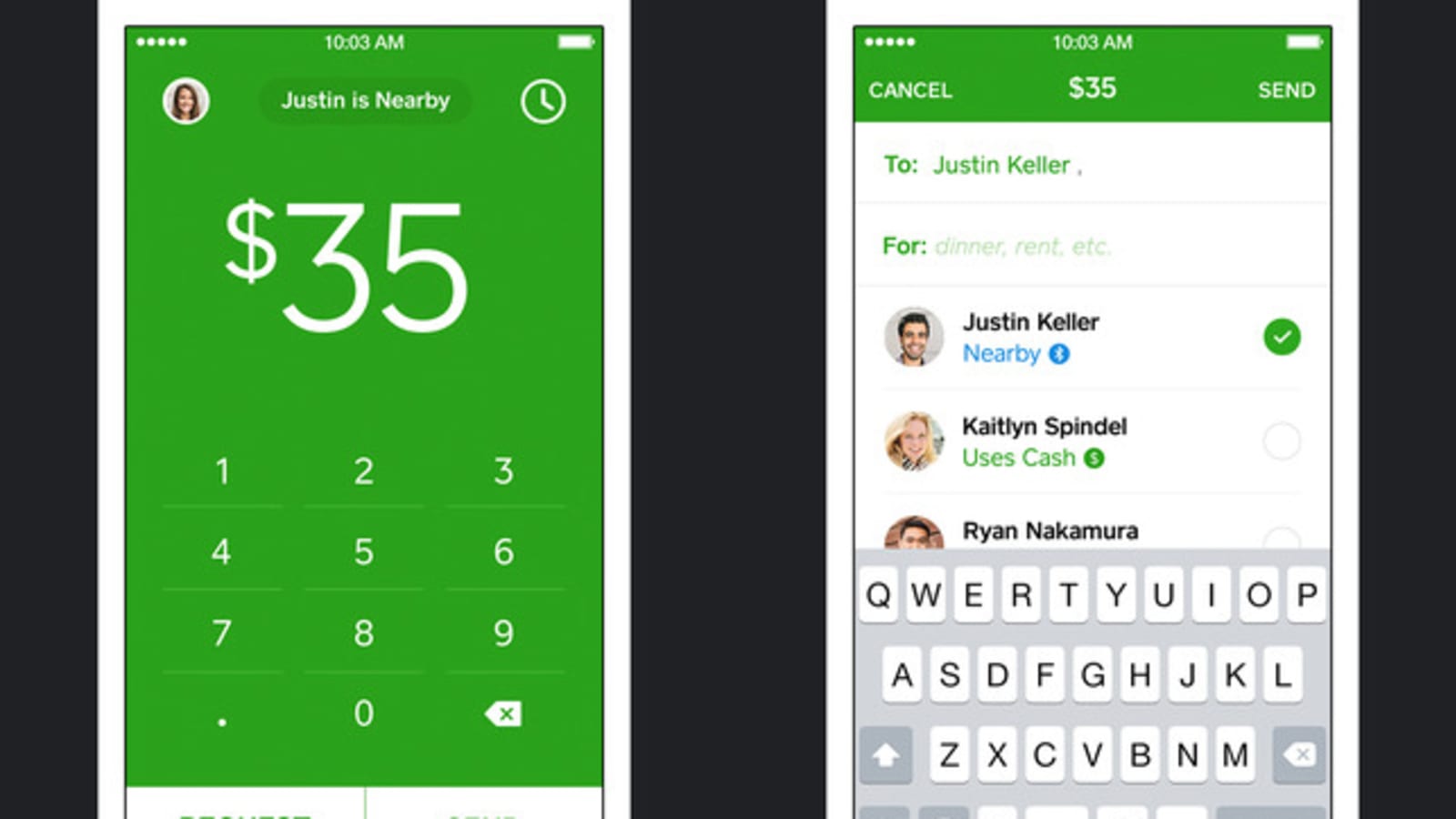What Is a Block in Cryptocurrency
In the world of cryptocurrency, a block refers to a fundamental unit of data that serves as the building block of a blockchain. It contains a set of transactions that have been validated and added to the ledger by the network participants, also known as miners.
Each block in a cryptocurrency network is comprised of several components, including a block header, block height, block size, block time, and block reward. These components work together to ensure the integrity and security of the blockchain.
The block header is an essential part of a block, containing metadata such as the previous block’s hash, a timestamp, a nonce, and a Merkle tree root. It serves as a unique identifier for the block and helps maintain the chronological order of the blockchain.
The block height refers to the position of a block within the blockchain. It is represented by a numerical value and is incremented with the addition of each new block. The block height is crucial for determining the validity of transactions and maintaining the consensus among the network participants.
The block size represents the total amount of data contained in a block. It includes the size of the block header, transaction data, and any additional information. The block size can vary depending on the cryptocurrency, but it is typically limited to prevent bloating of the blockchain.
Block time refers to the average time it takes to generate a new block in a cryptocurrency network. It is an important parameter as it determines the speed and efficiency of the blockchain. Different cryptocurrencies have different block time intervals, ranging from seconds to several minutes.
Every time a new block is added to the blockchain, the miner responsible for validating and adding the block is rewarded with a block reward. This is usually in the form of newly created cryptocurrency coins, which incentivizes miners to contribute to the network’s security and stability.
The concept of blocks is at the core of blockchain technology. By linking each block through a cryptographic hash, a chain is formed, creating a transparent and immutable ledger of transactions. This decentralized structure ensures the security and trustworthiness of the cryptocurrency network.
Finally, the process of mining plays a vital role in the creation of blocks. Miners use powerful computers to solve complex mathematical problems, validating transactions and adding them to the blocks. Once a block is completed, it is added to the blockchain, and the mining process starts again for the next block.
In summary, a block in cryptocurrency is a fundamental unit of data that contains a set of validated transactions. It is comprised of various components that contribute to the security and efficiency of the blockchain. Understanding the concept of blocks is crucial for comprehending how cryptocurrencies operate and how transactions are recorded and verified.
Components of a Block
A block in cryptocurrency is composed of several key components that work together to form a secure and efficient system. Understanding these components is essential for gaining a deeper insight into how blockchain technology functions. Let’s explore these components in more detail:
1. Block Header: The block header is a crucial part of every block. It contains metadata that serves as a unique identifier for the block. The block header includes the previous block’s hash, a timestamp, a nonce, and a Merkle tree root. The previous block’s hash ensures the chronological order of the blocks, while the timestamp records the time of block creation. The nonce is a random number used in the mining process, and the Merkle tree root provides a summary of all the transactions within the block.
2. Block Height: Each block in a blockchain network has a specific position known as its block height. The block height is represented by a numerical value and is incremented with the addition of each new block. It is crucial for maintaining the consensus and integrity of the blockchain. The block height allows network participants to easily verify the validity of transactions and ensures a consistent view of the blockchain across all nodes.
3. Block Size: The block size refers to the amount of data contained within a block. It includes the size of the block header, transaction data, and any additional information. The block size plays a significant role in determining the scalability of a cryptocurrency network. Larger block sizes can accommodate more transactions, but they also increase the storage and bandwidth requirements for network participants. Some cryptocurrencies impose limits on block sizes to prevent the blockchain from becoming too large and unwieldy.
4. Block Time: Block time refers to the average time it takes to generate a new block on the blockchain. It is a crucial parameter that impacts the network’s speed and efficiency. Different cryptocurrencies have different block time intervals, which can range from a few seconds to several minutes. Shorter block times allow for faster transaction confirmations but can also increase the risk of forks and orphaned blocks. Longer block times provide more security but may result in slower transaction processing.
5. Block Reward: The block reward is the incentive given to miners for successfully mining and adding a new block to the blockchain. It is typically in the form of newly created cryptocurrency coins. The block reward serves as a motivational factor for miners, compensating them for their computational efforts and ensuring the security and stability of the network. Over time, the block reward is often reduced as the total supply of the cryptocurrency reaches its predetermined limit.
These components work together to create a robust and secure blockchain network. The block header ensures the uniqueness and integrity of each block, while the block height maintains the order and consensus of the blockchain. The block size, block time, and block reward contribute to the scalability, efficiency, and incentivization of the network. Understanding these components will help you grasp the inner workings of blockchain technology and its impact on the world of cryptocurrencies.
Block Header
The block header is a critical component of every block in a cryptocurrency blockchain. It contains essential metadata that serves as a unique identifier and helps maintain the integrity and chronological order of the blockchain. Let’s take a closer look at the elements that make up the block header:
1. Previous Block’s Hash: The block header includes the hash of the previous block in the blockchain. This hash serves as a link that connects one block to the next, forming a chain. By including the previous block’s hash, the block header ensures that the blocks are arranged in a specific order, enabling the blockchain to maintain a reliable and transparent transaction history.
2. Timestamp: The block header also contains a timestamp, which indicates the time at which the block was created. This timestamp helps maintain an accurate record of the chronological order of block creation. It allows network participants to validate the sequence of events and ensures that everyone has a consistent view of the blockchain’s history.
3. Nonce: The nonce is a randomly generated number that is included in the block header. It is used in the mining process to solve a mathematical puzzle and find a valid block hash. Miners iteratively change the nonce value until they find a hash that meets certain criteria, such as being below a target value. The nonce provides a way for miners to compete to find the correct hash and adds an element of randomness and security to the blockchain.
4. Merkle Tree Root: The block header also includes a Merkle tree root, which is a summary of all the transactions within the block. A Merkle tree is a data structure that organizes transactions in a way that allows for efficient verification of their inclusion in the block. The Merkle tree root provides a single hash that represents the entire set of transactions, making it easier to verify the integrity of the block’s contents.
The block header plays a crucial role in maintaining the blockchain’s integrity and ensuring the security of the network. By including the previous block’s hash, the block header creates a linear and tamper-proof chain of blocks. The timestamp and nonce provide a means of achieving consensus among network participants and prevent abuse. The Merkle tree root enables efficient verification of transactions, making it easier to detect any attempts to alter the contents of a block.
It is worth noting that the block header is hashed to produce the block hash. This hash serves as a unique identifier for the block and, along with the previous block’s hash, further cements the immutability and transparency of the blockchain.
Understanding the significance of the block header allows one to appreciate the complexity and security measures inherent in blockchain technology. The inclusion of these metadata elements ensures the reliability and trustworthiness of the blockchain, making it a foundational component of cryptocurrencies and other blockchain-based applications.
Block Height
Block height is a crucial concept in the world of cryptocurrency and blockchain technology. It refers to the position of a block within the blockchain, serving as a unique identifier for each block. Understanding block height is essential for maintaining the consensus and integrity of the blockchain. Let’s delve deeper into the significance of block height:
1. Unique Identifier: Each block in a blockchain network is assigned a block height, which is represented by a numerical value. This value differentiates one block from another and helps establish the order in which blocks are added to the blockchain. The unique identification is critical for maintaining the integrity of the blockchain, as it ensures that every block has a specific place within the network.
2. Consensus Mechanism: Block height plays a significant role in achieving consensus among network participants. Consensus refers to the agreement reached by the network on the validity and sequence of transactions. By verifying the block height, participants can determine whether a block is part of the longest chain and has been accepted by the majority of network nodes. This mechanism ensures that all participants have a consistent view of the blockchain’s state and prevents the risk of double-spending or other fraudulent activities.
3. Verification of Transactions: Block height is crucial for verifying the validity of transactions. Each transaction within a block is associated with a specific block height, indicating the point at which it was included in the blockchain. Network participants can easily check the block height of a transaction to ensure that it has been confirmed and properly recorded in the blockchain’s history. This verification process provides transparency and trust in the transactional activity of the blockchain.
4. Forks and Orphaned Blocks: Block height helps detect and resolve forks in the blockchain. A fork occurs when multiple blocks are created simultaneously, resulting in alternative chains. In such cases, the block height is used to determine which chain is the longest and thus the valid one. The longest chain is generally considered the main chain, and the shorter chain becomes an “orphaned” branch. By looking at the block height, nodes can identify the correct chain and continue to build on it, ensuring the security and stability of the network.
In summary, block height is a fundamental aspect of the blockchain that helps maintain the order, consensus, and integrity of the network. It serves as a unique identifier for blocks, enabling participants to verify the validity and sequence of transactions. Block height plays a pivotal role in achieving consensus, detecting forks, and resolving orphaned blocks. Understanding the importance of block height is essential for grasping the inner workings of blockchain technology and its application in the world of cryptocurrencies.
Block Size
The block size is a critical parameter in cryptocurrency blockchains that determines the amount of data a block can contain. It plays a significant role in the network’s scalability, efficiency, and overall performance. Understanding the concept of block size is essential for comprehending the inner workings of blockchain technology. Let’s explore its significance in more detail:
1. Data Capacity: The block size refers to the maximum amount of data that can be included in a single block of the blockchain. It includes the size of the block header, transaction data, and any additional information. The data within a block consists of individual transactions, and the block size directly impacts how many transactions can be included in a given block. A larger block size allows for more transactions to be processed and confirmed, facilitating higher throughput and scalability.
2. Network Scalability: The block size plays a crucial role in determining the scalability of a cryptocurrency network. As the adoption of cryptocurrencies and the number of transactions increase, a larger block size becomes necessary to accommodate the growing load. However, increasing the block size is not without consequences. Larger blocks require more storage capacity and bandwidth for network participants, making it more challenging for regular users to participate in the network.
3. Transaction Confirmation Time: The block size directly affects the time it takes to confirm transactions on the blockchain. As more transactions are included in a block, it takes longer to validate and propagate the block across the network. A larger block size could lead to increased confirmation times, which can impact user experience and the overall efficiency of the blockchain network. Balancing the block size is crucial to maintain an optimal level of transaction speed without sacrificing security and decentralization.
4. Blockchain Bloat: Blockchain bloat is a term used to describe the situation where the blockchain becomes extremely large in terms of storage requirements. Increasing the block size can potentially lead to faster blockchain bloat, as more data is added with each block. This can create challenges for network participants who need to store and maintain a copy of the entire blockchain. Limiting the block size helps manage this issue and ensures the blockchain remains accessible and manageable for all participants.
5. Network Consensus: Decisions regarding block size can often lead to debates and disagreements within a cryptocurrency community. Different approaches and perspectives exist, with some advocating for larger blocks to improve scalability, while others argue for smaller blocks to maintain decentralization and security. Achieving consensus on block size changes requires careful consideration of network dynamics, technological limitations, and the long-term goals of the cryptocurrency project.
The block size is both a crucial parameter and a point of contention in cryptocurrency blockchain design. Finding the right balance between scalability, transaction speed, blockchain size, and network participation is a continuous challenge. Ultimately, the block size determines the capacity and efficiency of a blockchain network, shaping its ability to handle transactional demand while maintaining security and decentralization.
Block Time
Block time is a significant parameter in cryptocurrency blockchain networks, representing the average time it takes to generate a new block. It plays a crucial role in determining the speed, efficiency, and overall functionality of the blockchain. Understanding block time is essential for comprehending how transactions are processed and confirmed. Let’s explore the importance of block time in more detail:
1. Transaction Confirmations: Block time directly impacts the speed at which transactions are confirmed on the blockchain. Each new block added to the chain includes a set of verified transactions. The shorter the block time, the faster transactions can be confirmed and considered final. This is particularly crucial for time-sensitive transactions or scenarios where quick confirmations are essential, such as retail payments or real-time data recording.
2. Network Efficiency: A shorter block time can increase the efficiency of a blockchain network by allowing more transactions to be processed within a given time frame. This can result in higher throughput and a smoother user experience. However, shorter block times can also put more strain on the network, as miners need to work faster to solve the mining puzzle and generate new blocks. It is essential to strike a balance between block time and network efficiency to ensure optimal performance.
3. Forks and Consensus: Block time plays a role in preventing forks within the blockchain network. Forks occur when multiple blocks are created simultaneously, resulting in separate chains. To resolve forks, the network relies on the concept of the longest chain. The chain with the most cumulative proof of work is considered the valid one. Block time helps determine the length of the chain, as longer block times give more time for nodes to receive and validate blocks, reducing the likelihood of forks.
4. Security Considerations: Block time can impact a blockchain’s overall security. Longer block times provide more opportunities for miners to solve the mining puzzle and add blocks to the chain. This extended timeframe increases the computational effort required to attack the network, making it more secure against potential threats like 51% attacks. However, longer block times can also result in slower transaction confirmations, which may be a trade-off between security and user experience.
5. Network Stability: Block time helps maintain the stability of the blockchain network. A consistent block time allows network participants to anticipate when new blocks will be added and schedule their operations accordingly. Sudden fluctuations in block time can disrupt the network’s operations and potentially lead to inconsistencies and inefficiencies. Consistently stable block time ensures predictability and reliability, providing a solid foundation for the blockchain’s functionality.
The choice of block time depends on the specific characteristics and goals of each cryptocurrency. Different blockchain networks adopt different block times based on their unique requirements, user needs, and technological considerations. By optimizing block time, developers can strike a balance between transaction speed, network efficiency, security, and stability, ultimately creating a robust and functional blockchain ecosystem.
Block Reward
The block reward is a fundamental concept in cryptocurrency blockchains, serving as an incentive for miners to validate transactions and maintain the security and integrity of the network. It is usually in the form of newly created cryptocurrency coins, which are awarded to miners who successfully mine and add a new block to the blockchain. Understanding the block reward is crucial for comprehending the economic incentives that drive blockchain networks. Let’s explore the significance of the block reward in more detail:
1. Incentivizing Mining: The block reward serves as a powerful motivator for miners to devote computational resources, such as processing power and electricity, to the network. By offering a reward for their efforts, miners are encouraged to compete with one another to solve complex mathematical puzzles and validate transactions. Without the block reward, the mining process would lack a fundamental incentive, potentially compromising the network’s security and stability.
2. Newly Created Coins: The block reward often consists of newly created cryptocurrency coins. These coins are “minted” or generated as part of the mining process and are added to circulation. The creation of new coins helps control the cryptocurrency’s supply and distribution. Typically, there is a predetermined schedule that reduces the block reward over time, eventually leading to a fixed maximum supply. This ensures the scarcity and value of the cryptocurrency as it becomes increasingly difficult to obtain new coins.
3. Network Security: The block reward plays a vital role in ensuring the security and robustness of the blockchain network. As miners compete to earn the block reward, they contribute computational power to the network, making it more difficult for malicious actors to launch attacks. The decentralized nature of blockchain technology, combined with the economic incentives provided by the block reward, creates a strong and resilient network that is resistant to tampering and manipulation.
4. Transaction Fees: In addition to the block reward, miners may also receive transaction fees from users who wish to have their transactions included in a block. These fees serve as an additional incentive for miners to prioritize certain transactions over others. Transaction fees can vary based on factors such as the transaction size, network congestion, and user preferences. The inclusion of transaction fees helps sustain the mining ecosystem, especially as the block reward decreases over time.
5. Economic Considerations: The block reward has economic implications for both miners and the broader cryptocurrency ecosystem. Miners can generate revenue by selling the newly created coins received as block rewards or by accumulating them as a long-term investment. The block reward also affects the circulating supply of the cryptocurrency, which can impact its price and market dynamics. Economic models and mechanisms are designed to balance the block reward with factors such as supply, demand, and overall market conditions.
The block reward serves as a pivotal element within cryptocurrency blockchains. By providing a powerful incentive for miners to contribute their computational resources, it ensures the network’s security, integrity, and decentralization. As the cryptocurrency ecosystem continues to evolve, the block reward and its economic implications will remain at the core of incentivizing participation and sustaining the growth and stability of blockchain networks.
Blockchains and Blocks
Blockchains and blocks are fundamental concepts in the world of cryptocurrency and decentralized ledger technology. A blockchain is a distributed and immutable ledger that consists of a chain of interconnected blocks, each containing a set of validated transactions. Understanding the relationship between blockchains and blocks helps grasp the underlying mechanisms that make cryptocurrencies secure and transparent. Let’s explore this relationship in more detail:
1. The Building Blocks of Blockchain: Blocks are the building units of a blockchain. They are sequentially linked together, forming a chain that represents the transaction history of the cryptocurrency network. Each block contains a unique set of transactions that have been verified by network participants, ensuring their authenticity and validity.
2. Maintaining Data Integrity: By linking blocks together using cryptographic hash functions, the blockchain ensures data integrity and immutability. The hash of each block includes information about the transactions in the block as well as the hash of the previous block. This linkage, along with the decentralized nature of the blockchain, makes it extremely difficult for a malicious actor to tamper with past transactions without detection.
3. Consensus Mechanism: The creation and inclusion of blocks in the blockchain rely on a consensus mechanism agreed upon by the network participants. This mechanism ensures that all nodes in the network reach an agreement on the validity and order of transactions. Consensus mechanisms, such as Proof of Work (PoW) or Proof of Stake (PoS), incentivize network participants to validate transactions and create new blocks, maintaining the integrity and security of the blockchain.
4. Transparency and Trust: The transparent nature of the blockchain stems from its decentralized and publicly accessible structure. Every network participant has a copy of the blockchain, enabling anyone to validate transactions and independently verify the state of the network. Blocks serve as a source of transparency by providing a detailed record of all transactions that have occurred in the network, instilling trust and confidence in the system.
5. Scalability Challenges: The size and number of blocks in a blockchain can impact its scalability. Each block has a limited capacity for transactions, and as the number of transactions increases, so does the size of the blockchain. This can present challenges in terms of storage and the speed of transaction processing. Various approaches, such as increasing block size or implementing off-chain solutions, have been explored to address scalability concerns.
The relationship between blockchains and blocks highlights the core principles that underlie the success of cryptocurrencies. The interoperability and security provided by the blockchain rely on the inclusion of verified transactions in blocks, which are sequentially linked to create an immutable ledger. Understanding these concepts is crucial for comprehending how cryptocurrencies operate and their potential applications beyond financial transactions, including supply chain management, voting systems, and decentralized applications.
Mining and Blocks
Mining is a fundamental process in cryptocurrency networks that involves the validation and addition of new blocks to the blockchain. Miners play a critical role in maintaining the security, integrity, and decentralized nature of cryptocurrencies. Understanding the relationship between mining and blocks provides insights into the mechanisms that ensure the robustness of blockchain networks. Let’s explore this relationship in more detail:
1. Block Validation: Miners validate and verify transactions before including them in new blocks. They ensure that transactions adhere to the rules of the network, such as verifying the digital signatures and checking the availability of funds. By confirming the validity of transactions, miners prevent double-spending and other fraudulent activities, maintaining the integrity of the blockchain.
2. Solving the Mining Puzzle: Mining involves solving complex mathematical puzzles in order to find a hash value that meets certain criteria. These puzzles require substantial computational power, and the first miner to find a valid solution is rewarded with the opportunity to create a new block. Miners compete with each other to find the correct solution, using their computational resources to secure the network and validate transactions.
3. Block Formation: Once a miner successfully solves the mining puzzle, they create a new block by collecting validated transactions from the network. The miner constructs the block by including the transactions, along with other essential information such as the previous block’s hash and a timestamp. The newly created block is then propagated throughout the network, allowing other nodes to validate and add it to their copies of the blockchain.
4. Block Reward: Miners are rewarded for their efforts in creating and validating new blocks. The block reward is typically in the form of newly minted cryptocurrency coins, which are given to the miner who successfully adds a new block to the blockchain. This incentive motivates miners to contribute their computational resources and secure the network, ensuring the continued operation and growth of the cryptocurrency.
5. Network Consensus: The mining process plays a crucial role in achieving consensus within the network. Consensus refers to the agreement among network participants on the valid chain and the order of transactions. Through mining, miners contribute their computational resources to validate transactions and resolve any conflicts or inconsistencies. The majority of miners coming to a consensus on the longest chain determines the accepted version of the blockchain.
Mining is an energy-intensive process that requires powerful computational hardware and electricity. In some cryptocurrencies, such as Bitcoin, the mining algorithm is intentionally designed to become more challenging over time, ensuring a steady issuance of new coins while preventing the network from being easily compromised. As cryptocurrency networks evolve, alternative consensus mechanisms, such as Proof of Stake (PoS), aim to reduce the environmental impact of mining while still maintaining the decentralization and security of the blockchain.
In summary, mining is a fundamental process that enables the creation and validation of new blocks in cryptocurrency networks. Miners validate transactions, solve complex mathematical puzzles, and secure the network through their computational power. The block reward incentivizes miners, while the consensus achieved by miners ensures the integrity and decentralization of the blockchain. Understanding the relationship between mining and blocks provides important insights into how cryptocurrencies operate and how transactional integrity is maintained in a decentralized manner.
The Role of Blocks in Security
Blocks play a crucial role in ensuring the security and integrity of cryptocurrency networks. By linking individual transactions into blocks and forming a chain, blockchain technology provides a robust and secure platform for conducting digital transactions. Understanding the role of blocks in security helps appreciate the mechanisms that protect the integrity and authenticity of cryptocurrency transactions. Let’s explore this further:
1. Immutable Transaction History: Blockchains create an immutable record of transactions by linking them into blocks. Once a block is added to the blockchain, it is almost impossible to alter or delete the transactions it contains. The cryptographic hash linking each block to its predecessor ensures the integrity and security of the entire chain. This immutability protects against fraud, manipulation, and unauthorized changes to the historical record of transactions.
2. Tamper-Resistant Network: Blocks serve as the building blocks of the blockchain network’s security. Each block contains a unique hash that is dependent on the block data, including the transactions and the preceding block’s hash. If anyone attempts to tamper with the data within a block, the hash will change, alerting the network to the tampering attempt. This tamper-resistant property makes the blockchain an ideal platform for ensuring the integrity of sensitive data and transactions in various industries beyond finance.
3. Consensus Mechanisms: The creation and validation of blocks within a blockchain network rely on consensus mechanisms. Consensus mechanisms such as Proof of Work (PoW) or Proof of Stake (PoS) require network participants, known as miners or validators, to agree on the validity of transactions and the order in which they are added to the blockchain. Consensus mechanisms prevent malicious actors from altering the transaction history and ensure that only valid blocks are added to the blockchain.
4. Decentralization and Network Resilience: The distributed nature of blockchain networks enhances their security. By eliminating central points of control, blockchain networks are more resistant to hacking, data breaches, and other forms of attack. Each participant in a blockchain network holds a copy of the entire blockchain, making it extremely challenging for adversaries to manipulate the system by controlling a single authority. The redundancy and synchronization of the blockchain across multiple nodes contribute to the network’s resilience and security.
5. Protection against Double-Spending: Double-spending refers to the fraudulent act of spending the same cryptocurrency coins more than once. Blockchain technology eliminates the risk of double-spending through the sequential inclusion of transactions in blocks. When a transaction is included in a block and added to the blockchain, it becomes a permanent and verifiable record. Subsequent attempts to spend the same coins in another transaction will be rejected by the network, providing increased security and trust.
In summary, the role of blocks in security is central to the operation of cryptocurrency networks. Blocks ensure the immutability, tamper-resistance, and integrity of transaction histories. The consensus mechanisms employed in block validation prevent unauthorized modifications to the blockchain. By leveraging decentralization and cryptographic methods, blocks provide a high level of security that protects against fraud, double-spending, and manipulation. Understanding the role of blocks in security is crucial for grasping the transformative potential of blockchain technology across various industries.
Conclusion
Understanding the concepts of blocks and their role in cryptocurrency blockchains is essential for comprehending the inner workings and significance of this technology. Blocks are the building units of the blockchain, containing validated transactions that form a secure and transparent ledger. Their inclusion in the blockchain ensures data integrity, transaction security, and network consensus.
Block headers, block heights, block sizes, block times, and block rewards are all essential components within the structure of a block. The block header contains metadata that uniquely identifies each block and maintains the chronological order of the blockchain. Block height provides a numerical representation of a block’s position within the chain, ensuring transaction validation and consensus. Block size determines the capacity for transactions within a block, impacting network scalability and efficiency. Block time, on the other hand, refers to the average time it takes to generate a new block, influencing transaction confirmation speed and network stability. Block rewards incentivize miners to validate transactions and secure the blockchain network.
Mining plays a critical role in the creation of blocks, allowing miners to validate transactions, solve complex puzzles, and receive block rewards. This process ensures the security, immutability, and decentralization of the blockchain. The interplay between blocks and mining reinforces network consensus and facilitates efficient transaction processing.
The immutable nature of the blockchain provides transparency and trust, making it a powerful tool for various industries beyond finance. The security of blockchain networks is further enhanced through blocks, which prevent tampering, protect against double-spending, and establish a decentralized and resilient network.
In conclusion, the concepts of blocks and their role in cryptocurrency blockchains are crucial components in ensuring the security, integrity, and efficiency of these decentralized systems. Understanding these concepts provides insights into the benefits and transformative potential of blockchain technology across a wide range of applications, from financial transactions to supply chain management and beyond.

























